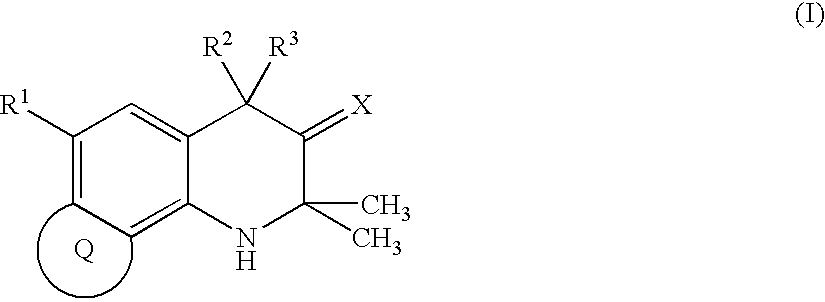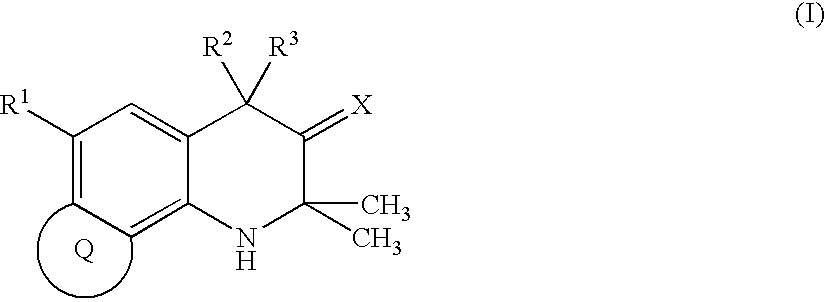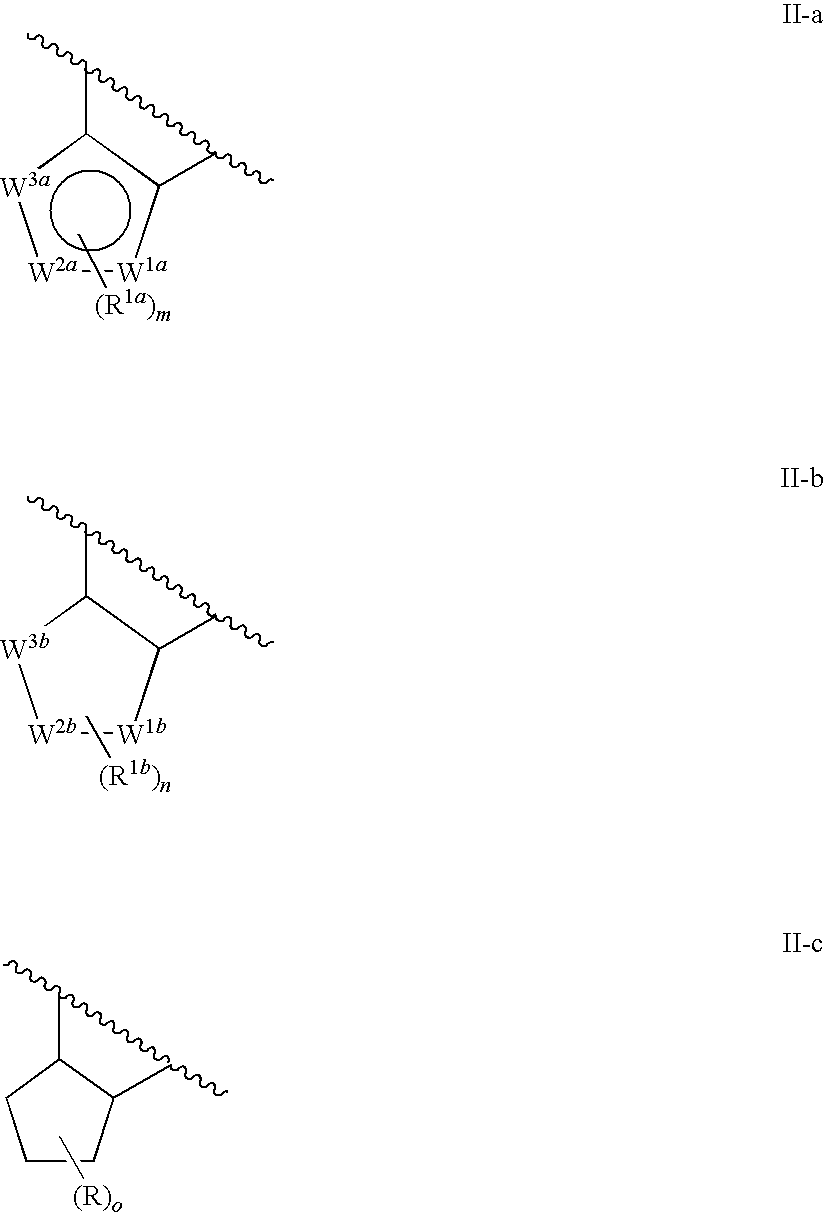Condensed tetrahydroquinoline derivative and use thereof for medical purposes
a technology of condensed tetrahydroquinoline and derivative, which is applied in the field can solve the problem of no report relating to the gr antagonist of condensed tetrahydroquinoline compound, and achieve the effect of superior gr antagonist action and promotion of developmen
- Summary
- Abstract
- Description
- Claims
- Application Information
AI Technical Summary
Benefits of technology
Problems solved by technology
Method used
Image
Examples
example 1
1) 2,2,4-trimethyl-2,7,8,9-tetrahydro-1H-cyclopenta[h]quinoline
[0353]
[0354]To a solution of 4-aminoindane (50 g) in acetone (500 ml) was added scandium(III) trifluoromethanesulfonate (10 g), and the mixture was stirred at room temperature for 5 days.
[0355]The reaction mixture was filtered through celite. The solvent was evaporated under reduced pressure and the residue was subjected to normal phase chromatography (elution solvent hexane-ethyl acetate=20:1) to give the title compound (59 g, 73%) as a brown oil.
[0356]NMR (400 MHz, CDCl3) δ: 1.29 (6H, s), 1.98 (3H, s), 2.06-2.13 (2H, m), 2.63 (2H, t, J=7.4 Hz), 2.86 (2H, t, J=7.4 Hz), 5.24 (1H, s), 6.55 (1H, d, J=7.6 Hz), 6.92 (1H, d, J=7.6 Hz).
2) 2,2,4-trimethyl-2,3,4,7,8,9-hexahydro-1H-cyclopenta[h]quinolin-3-ol
[0357]
[0358]To a solution of the compound of the previous step (59 g) in THF (600 ml) was added dropwise 1M borane / THF solution (500 ml) under ice-cooling over 2 hr, and the mixture was stirred at 10° C. for 1.5 hr, and at roo...
example 2
6-(3,5-dimethylisoxazol-4-yl)-2,2,4,4-tetramethyl-2,3,4,7,8,9-hexahydro-1H-cyclopenta[h]quinolin-3-one
[0390]
[0391]Using 4-iodo-3,5-dimethylisoxazole instead of 4-bromo-3-chlorophenol of Example 1, 10) and according to a similar method, the title compound (17 mg, 43%) was obtained.
[0392]NMR (300 MHz, CDCl3) δ: 1.36 (6H, s), 1.44 (6H, s), 2.11-2.18 (2H, m), 2.16 (3H, s), 2.27 (3H, s), 2.68 (2H, t, J=7.5 Hz), 2.80 (2H, t, J=7.5 Hz), 6.79 (1H, s). MS: 339 (M++1).
example 3
6-(3,5-dimethyl-3H-imidazol-4-yl)-2,2,4,4-tetramethyl-2,3,4,7,8,9-hexahydro-1H-cyclopenta[h]quinolin-3-one
[0393]
[0394]Using 4-bromo-3,5-dimethyl-3H-imidazole instead of 4-bromo-3-chlorophenol of Example 1, 10) and according to a similar method, the title compound (21 mg, 94%) was obtained.
[0395]NMR (400 MHz, CDCl3) δ: 1.36 (3H, s), 1.38 (3H, s), 1.44 (6H, s), 2.11 (3H, s), 2.11-2.18 (2H, m), 2.57-2.77 (2H, m), 2.80 (2H, t, J=7.5 Hz), 3.39 (3H, s), 3.59 (1H, br), 6.68 (1H, s), 7.50 (1H, s). MS: 338 (M++1)
PUM
| Property | Measurement | Unit |
|---|---|---|
| temperature | aaaaa | aaaaa |
| temperature | aaaaa | aaaaa |
| temperature | aaaaa | aaaaa |
Abstract
Description
Claims
Application Information
 Login to View More
Login to View More - R&D Engineer
- R&D Manager
- IP Professional
- Industry Leading Data Capabilities
- Powerful AI technology
- Patent DNA Extraction
Browse by: Latest US Patents, China's latest patents, Technical Efficacy Thesaurus, Application Domain, Technology Topic, Popular Technical Reports.
© 2024 PatSnap. All rights reserved.Legal|Privacy policy|Modern Slavery Act Transparency Statement|Sitemap|About US| Contact US: help@patsnap.com










